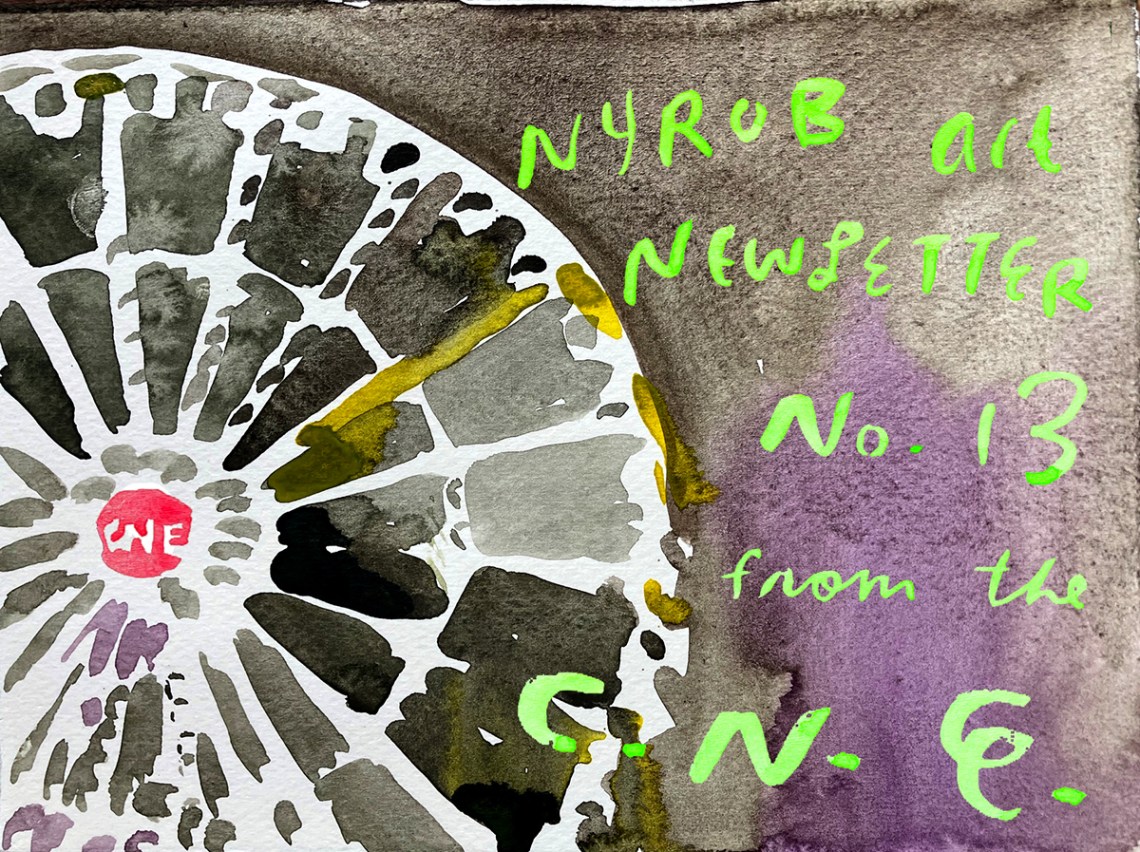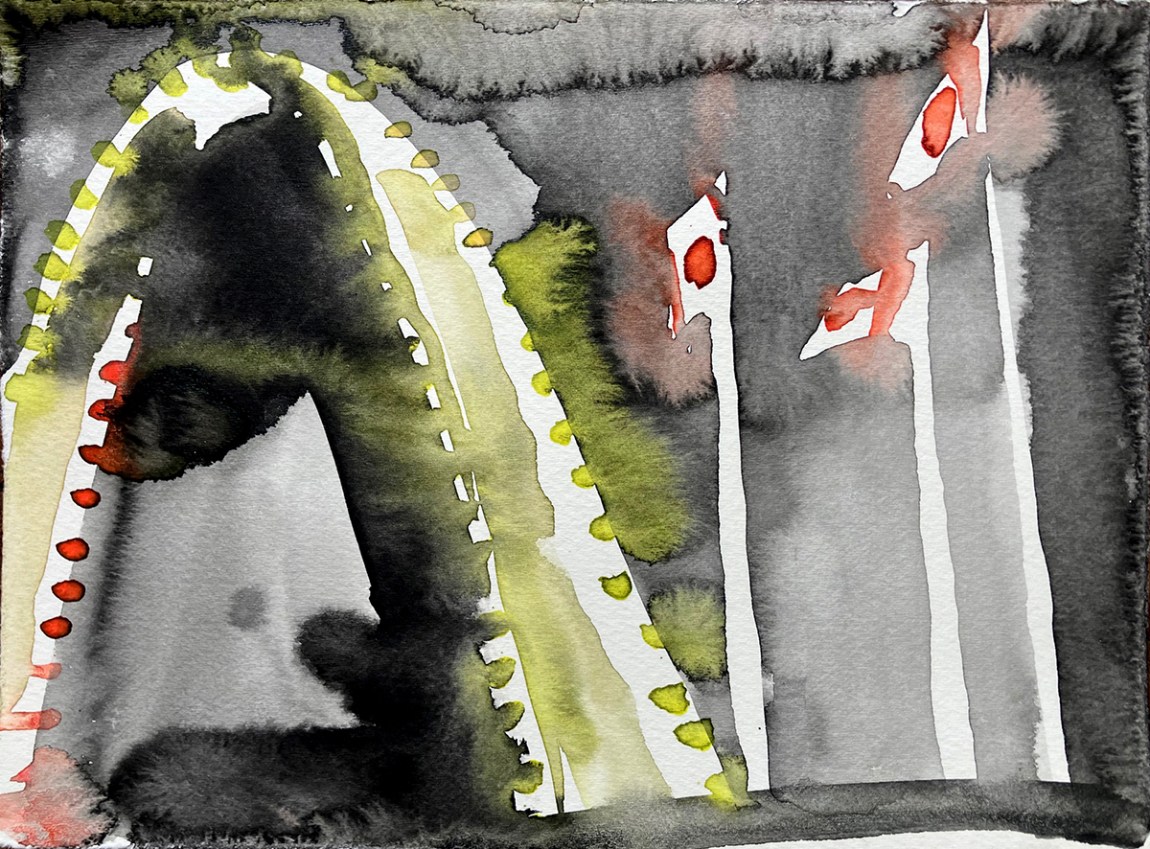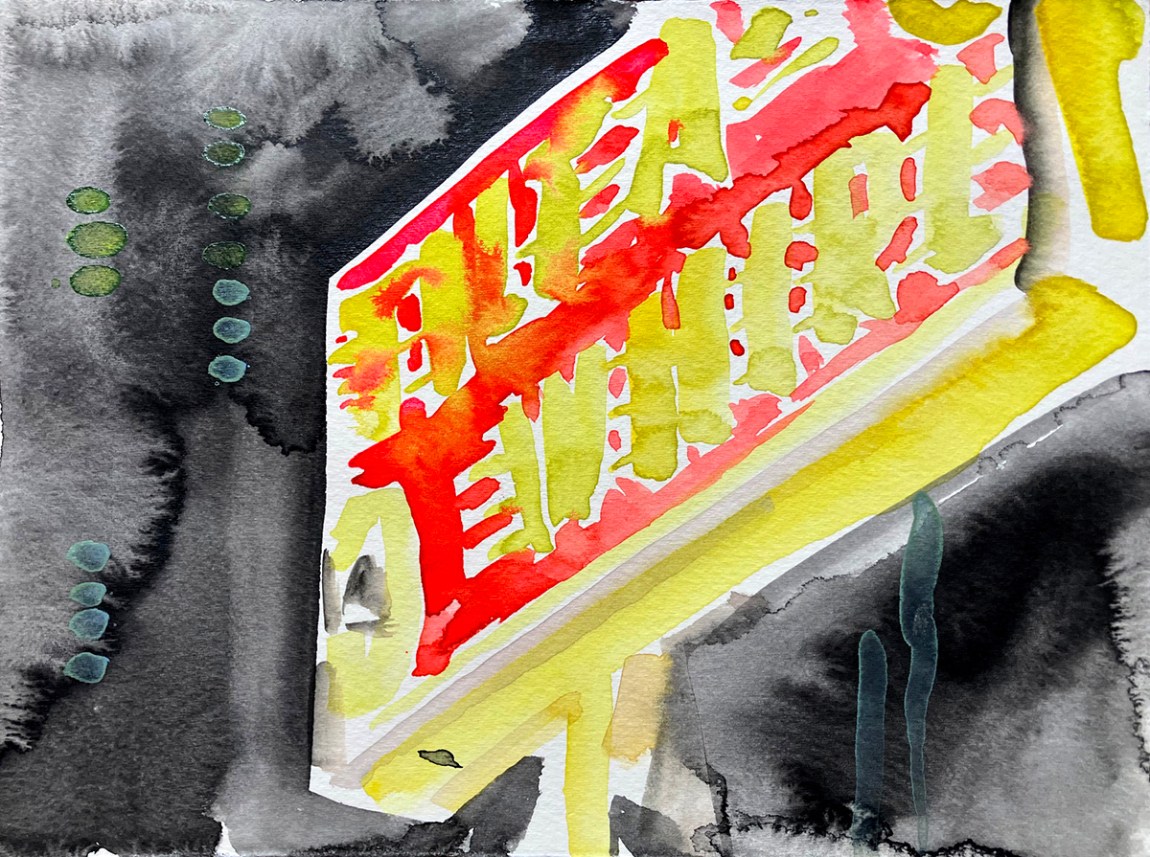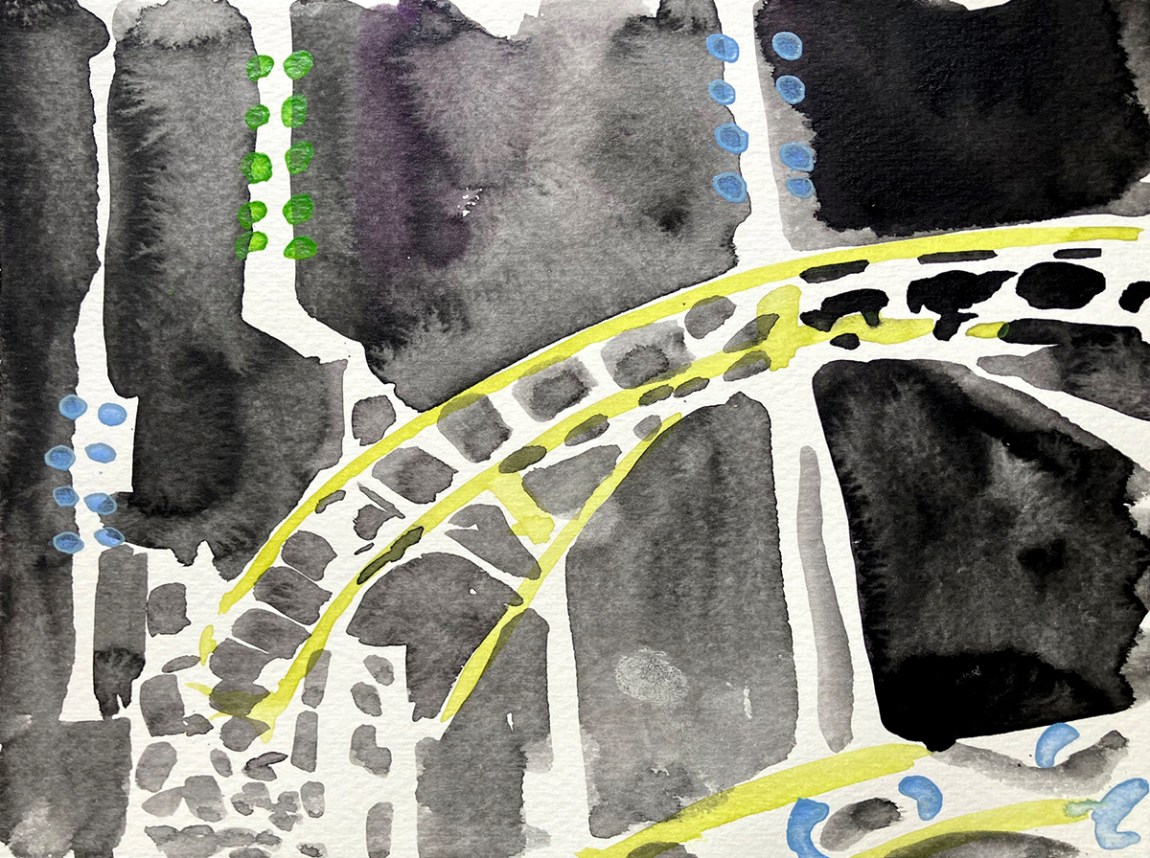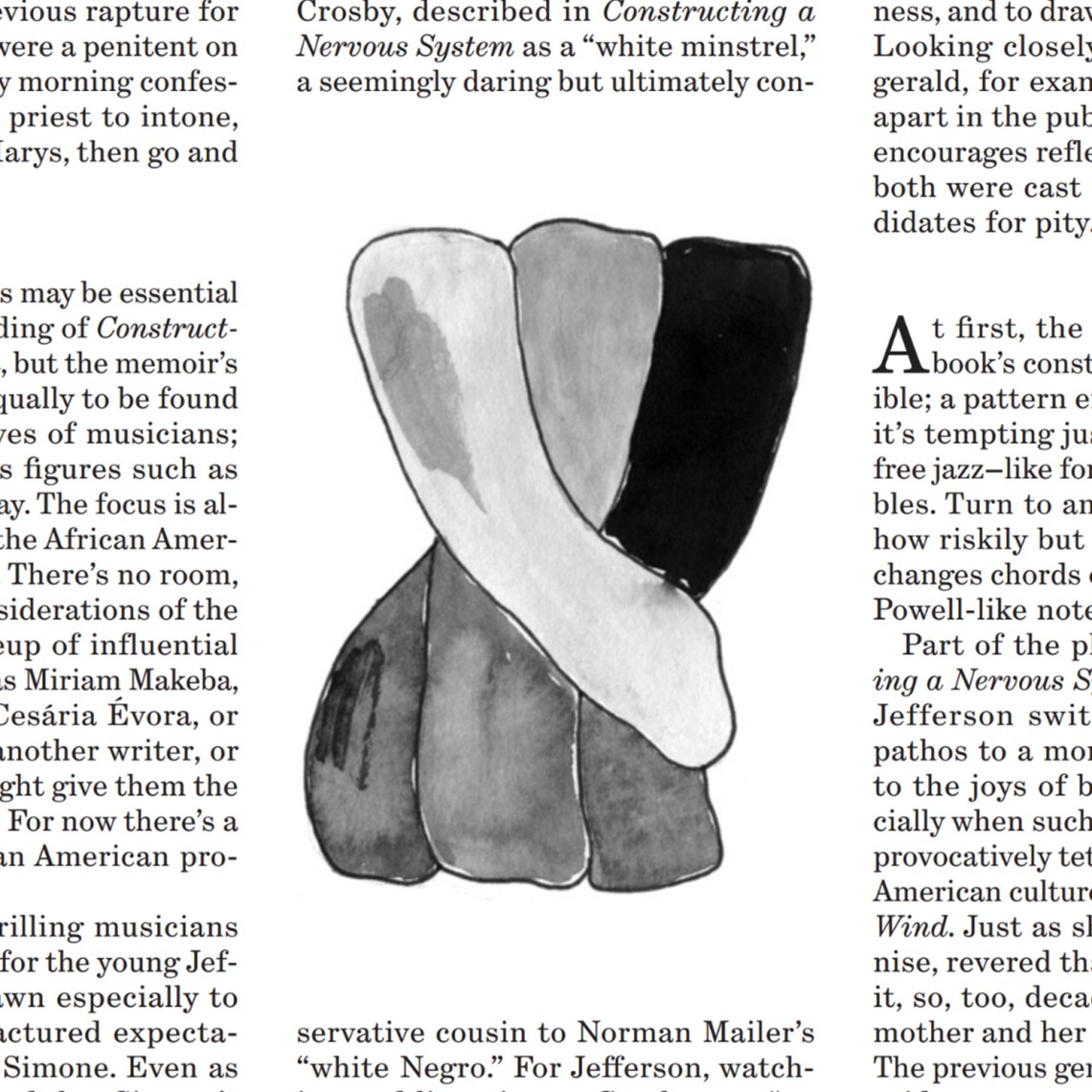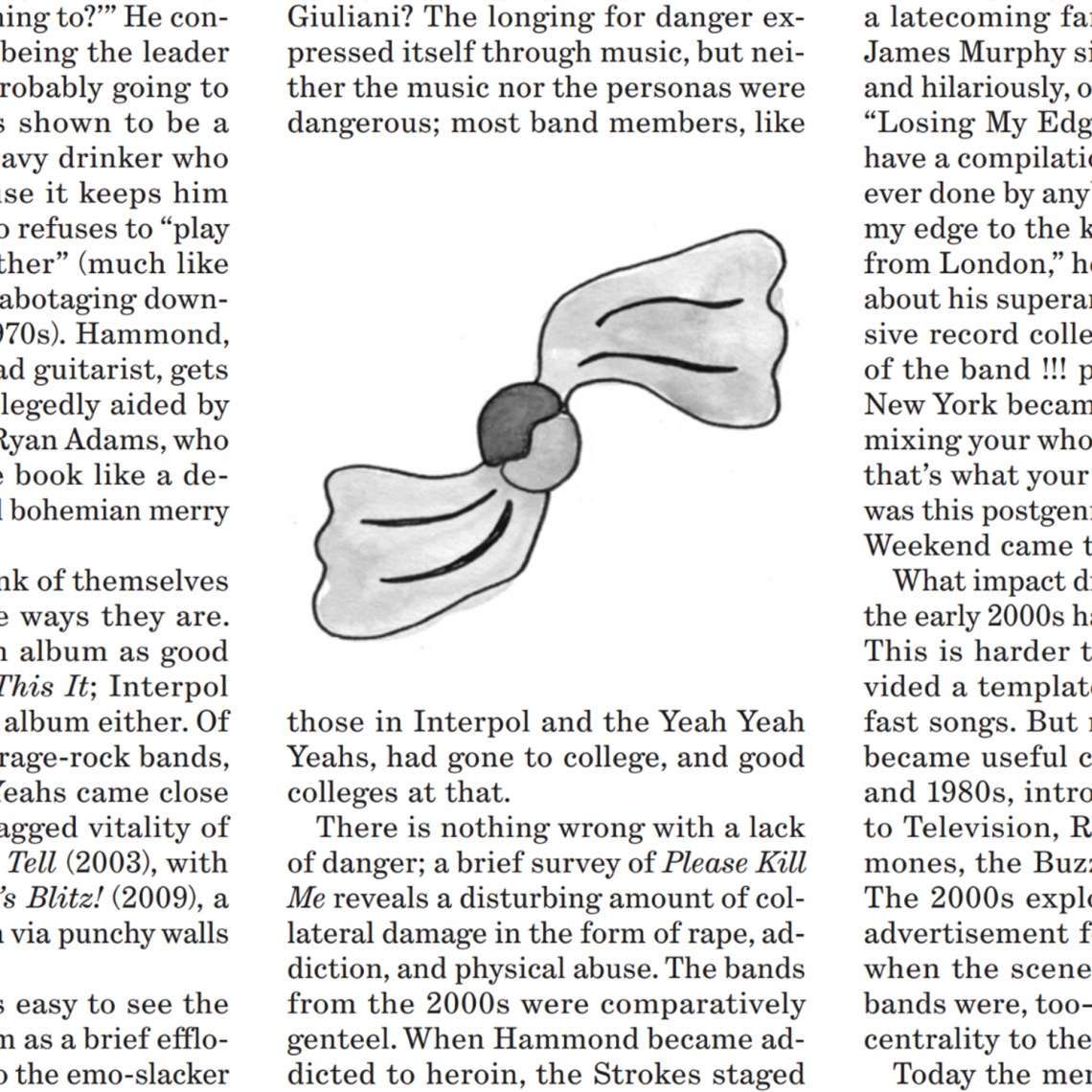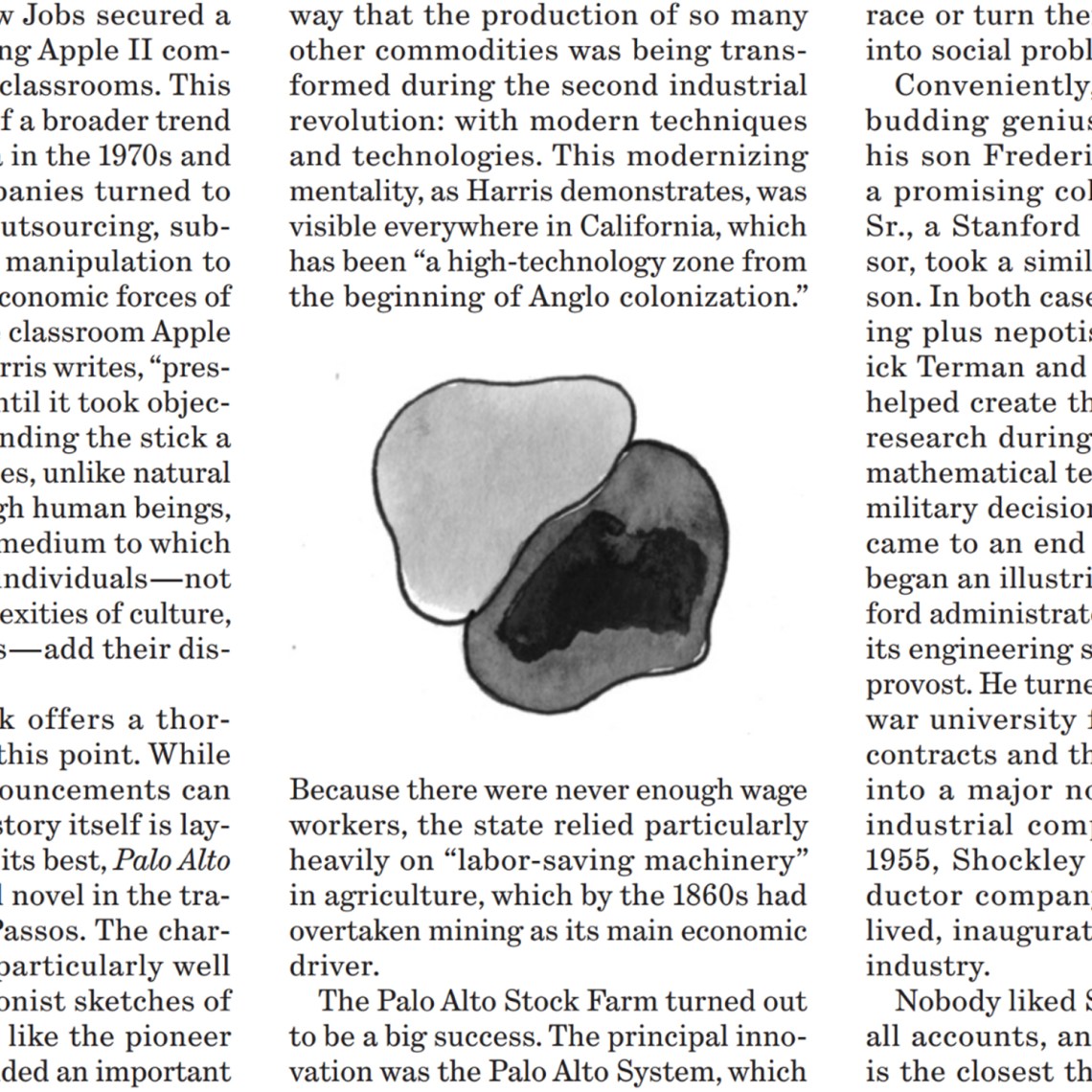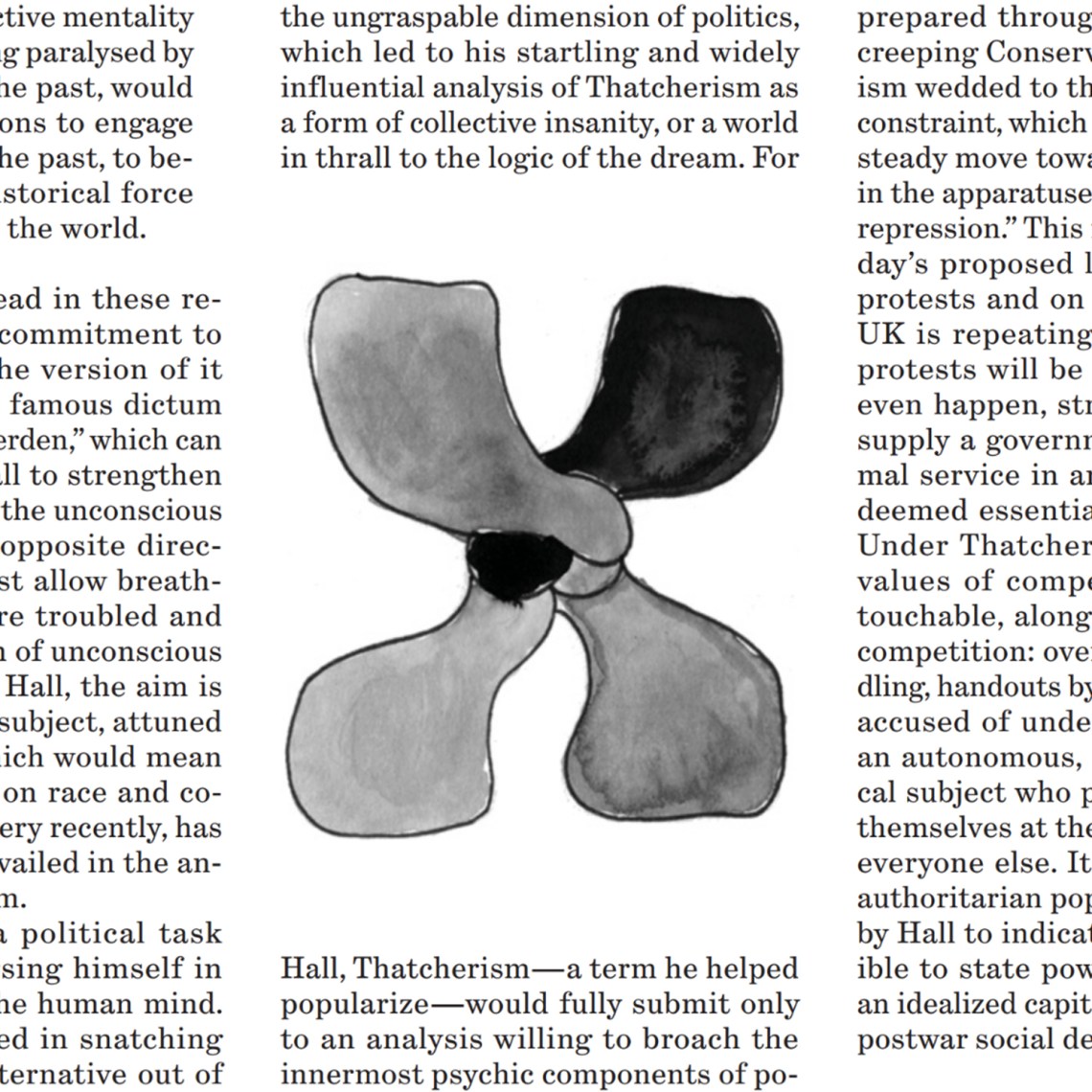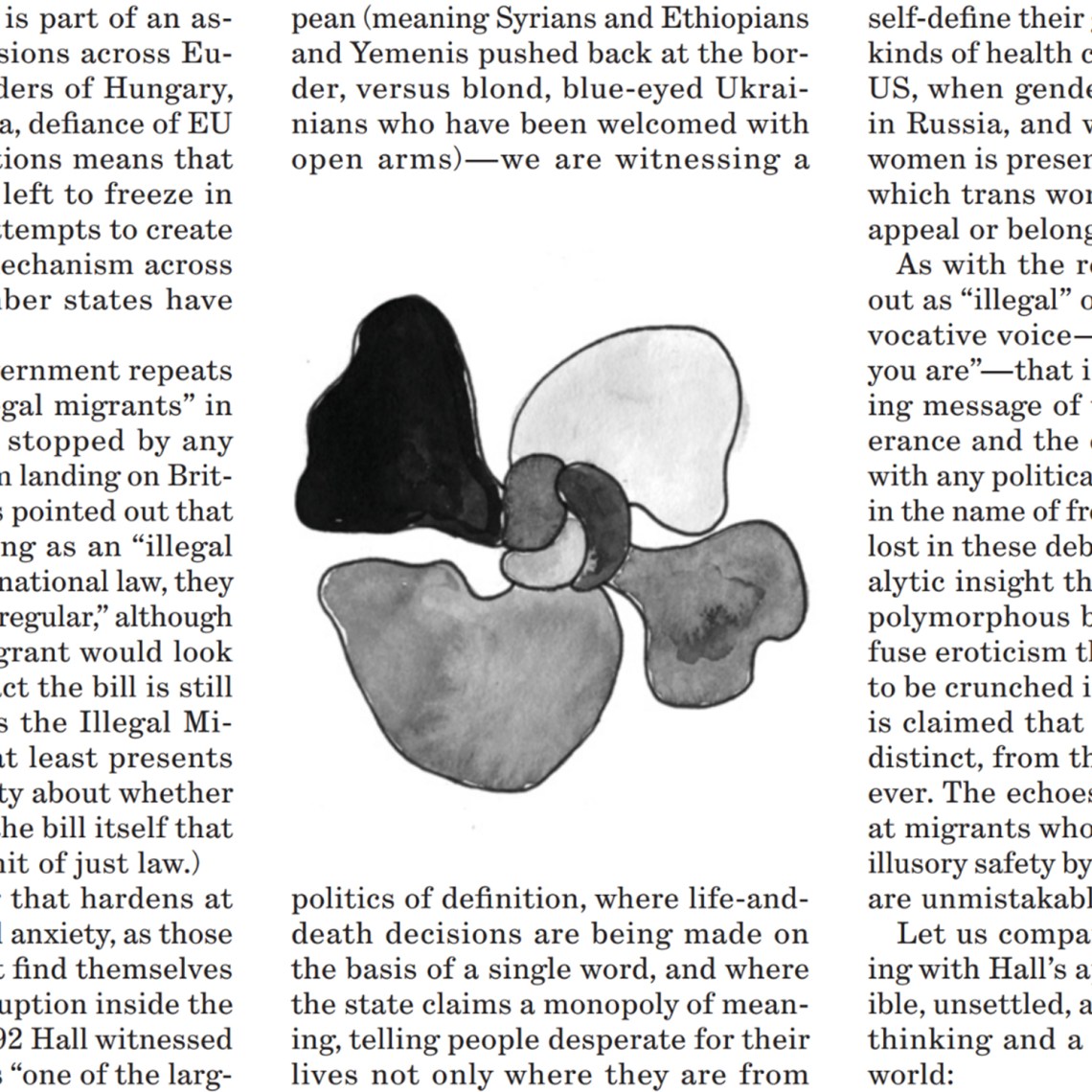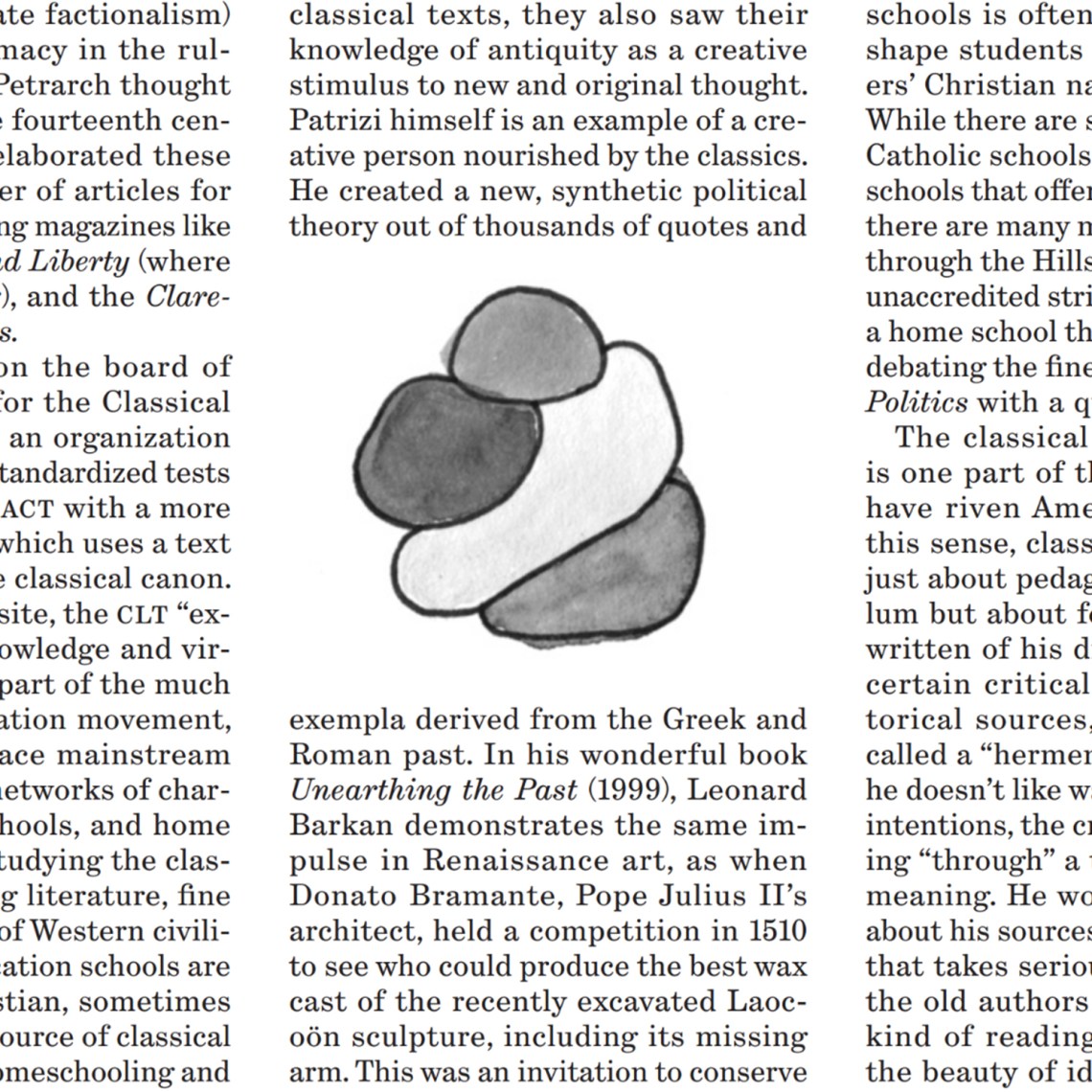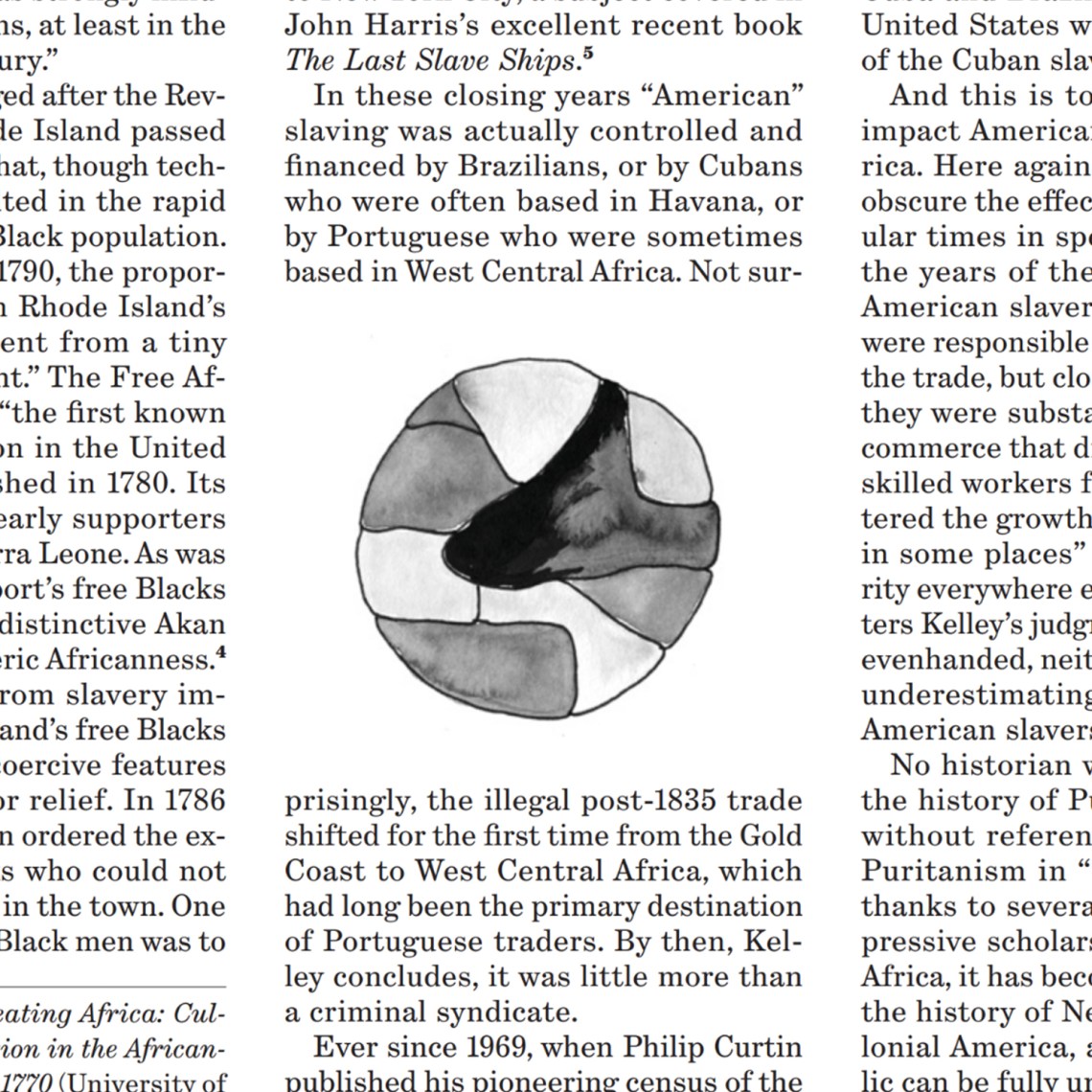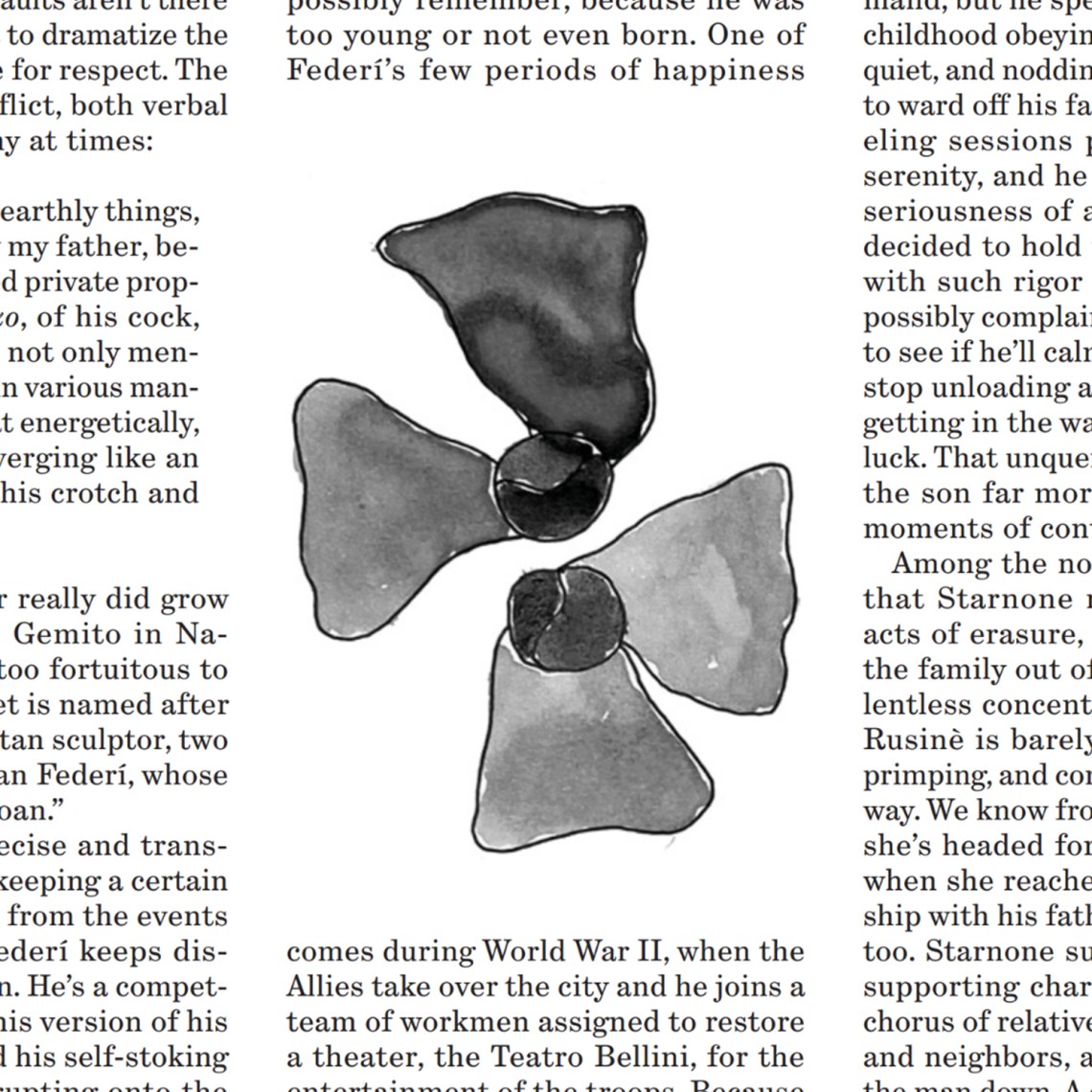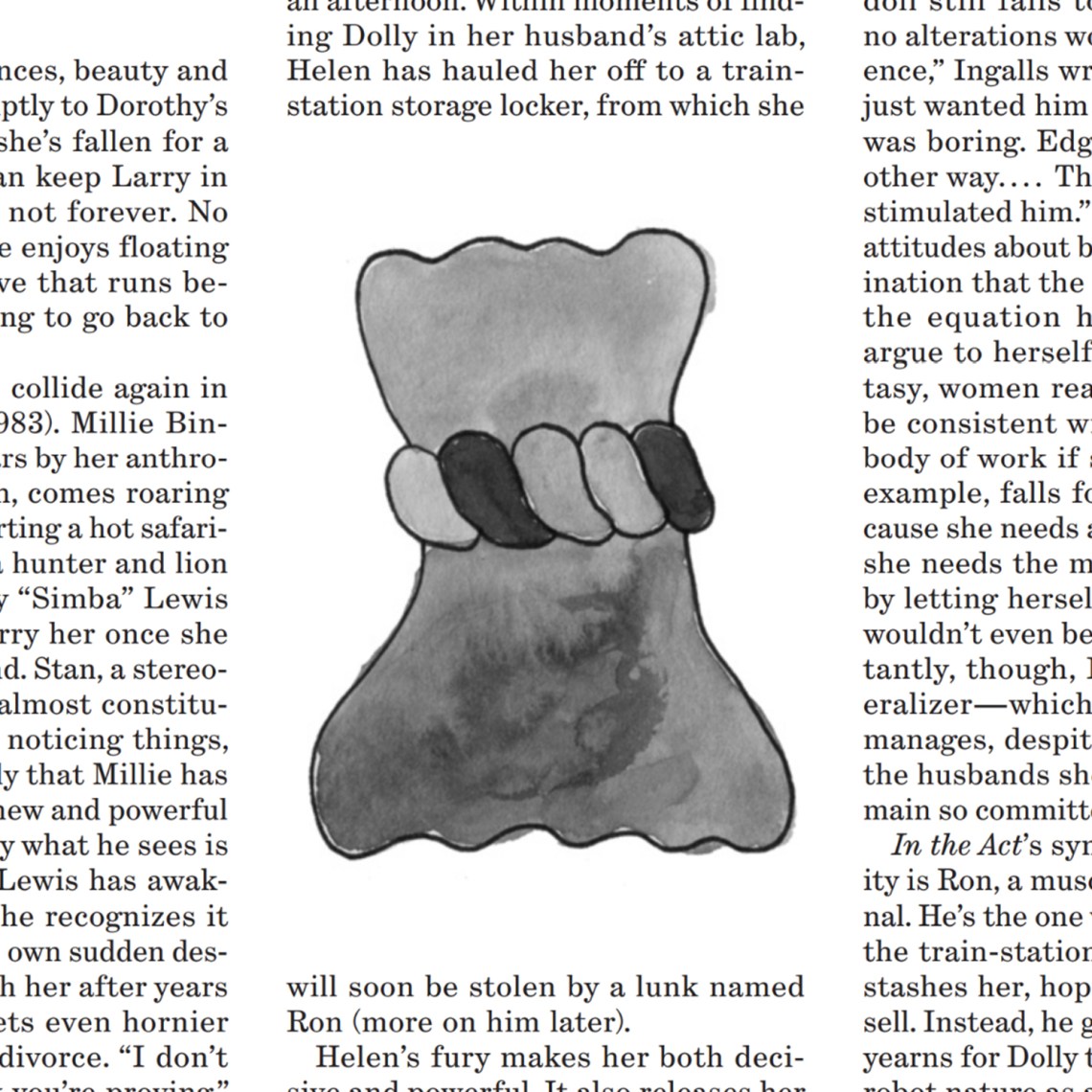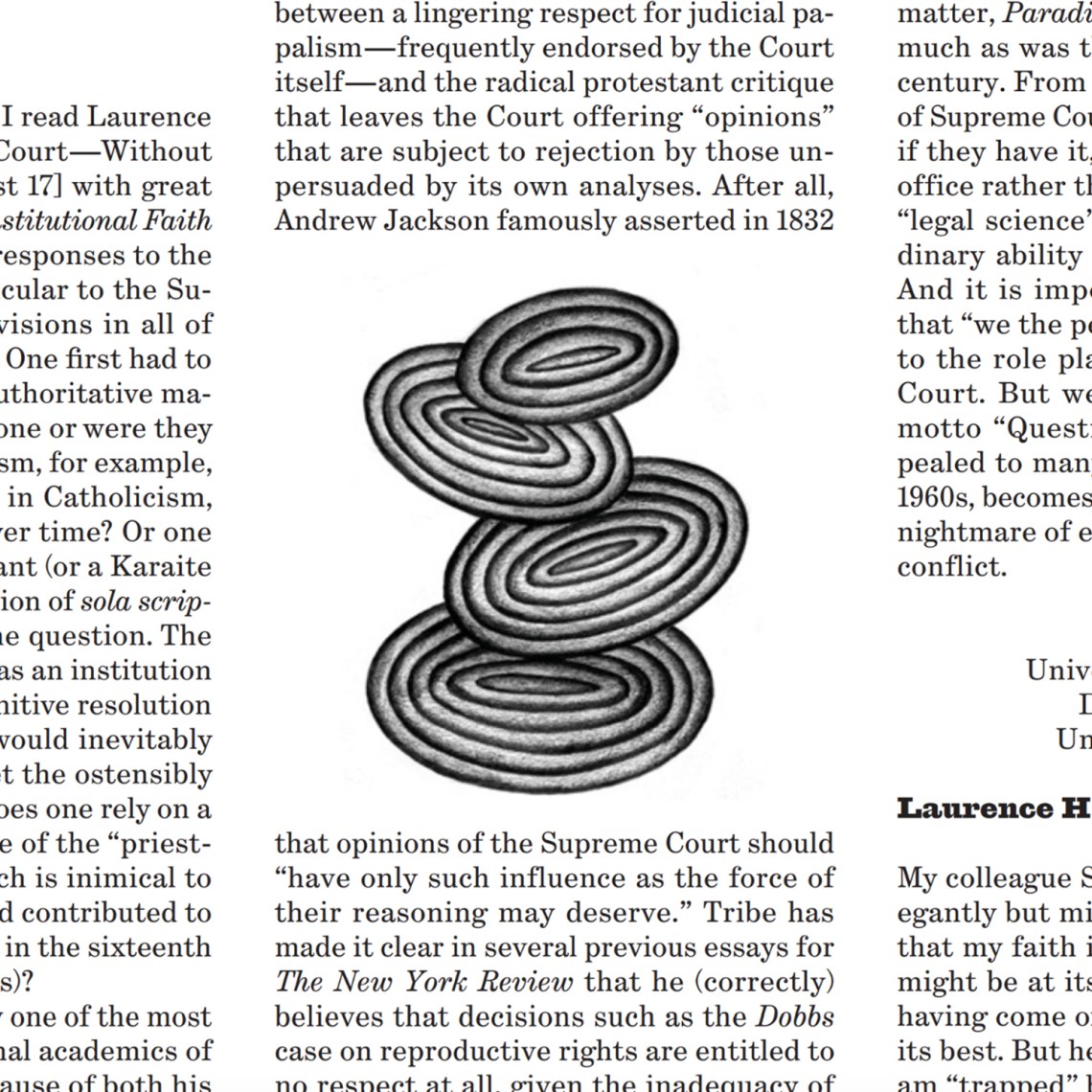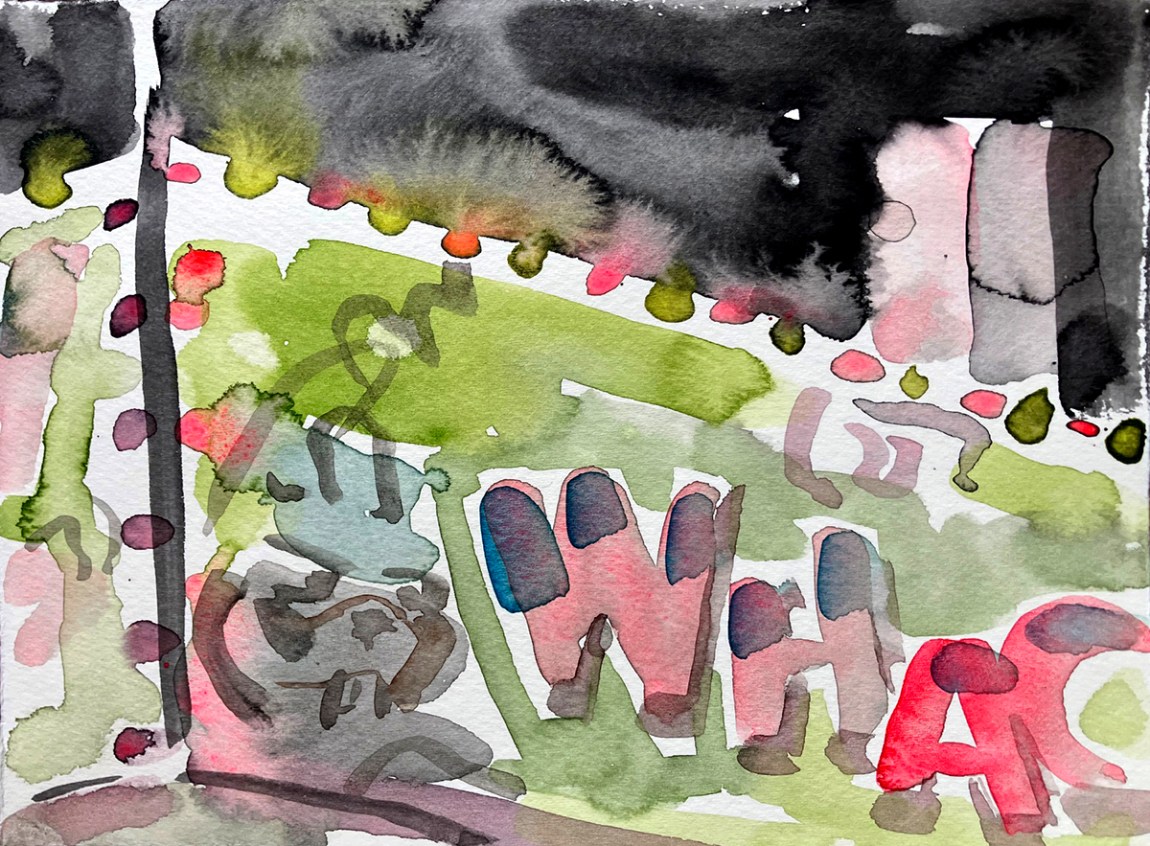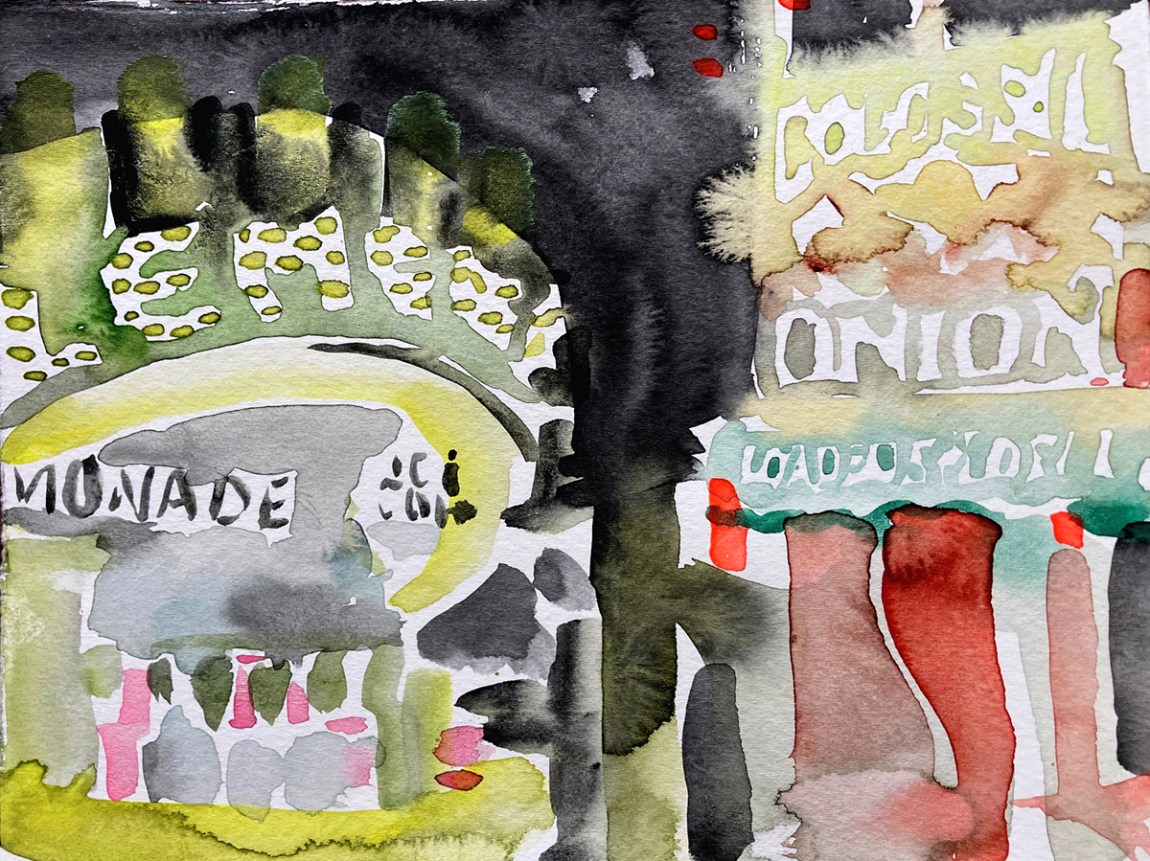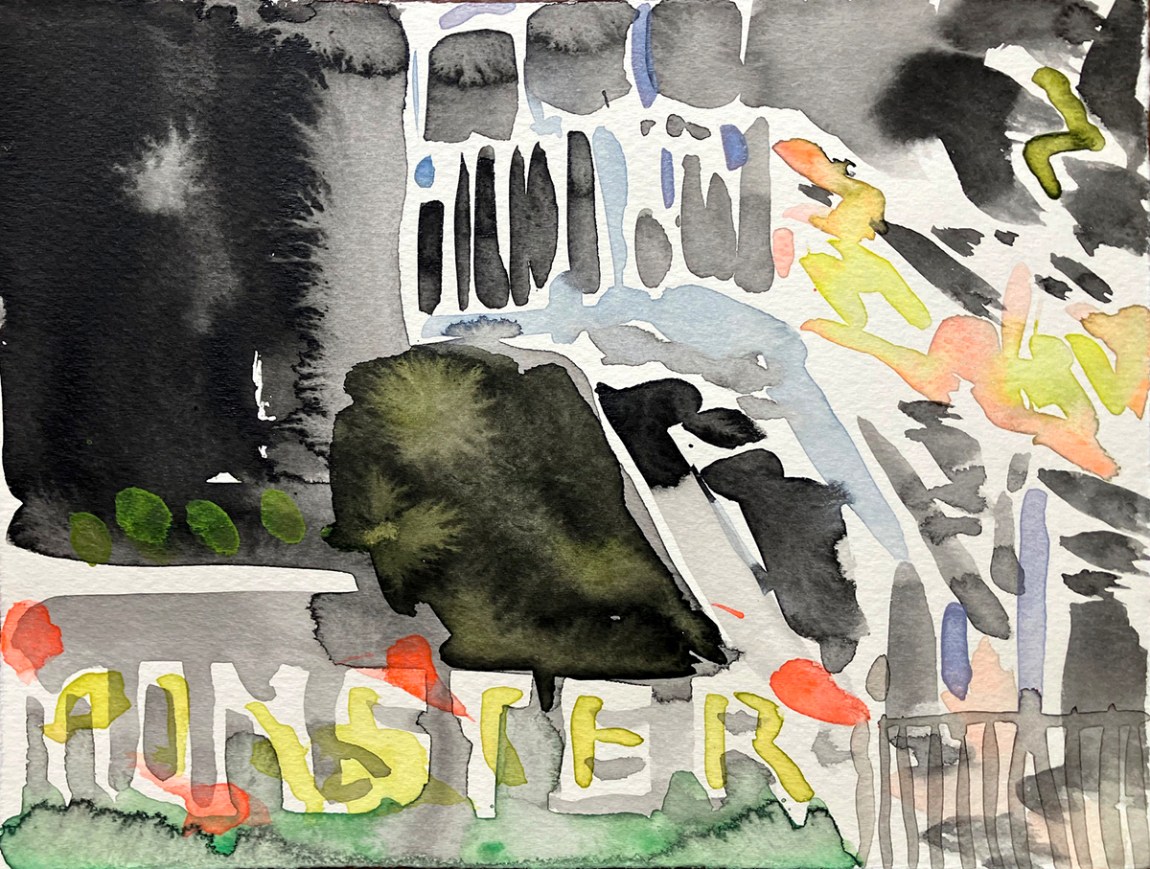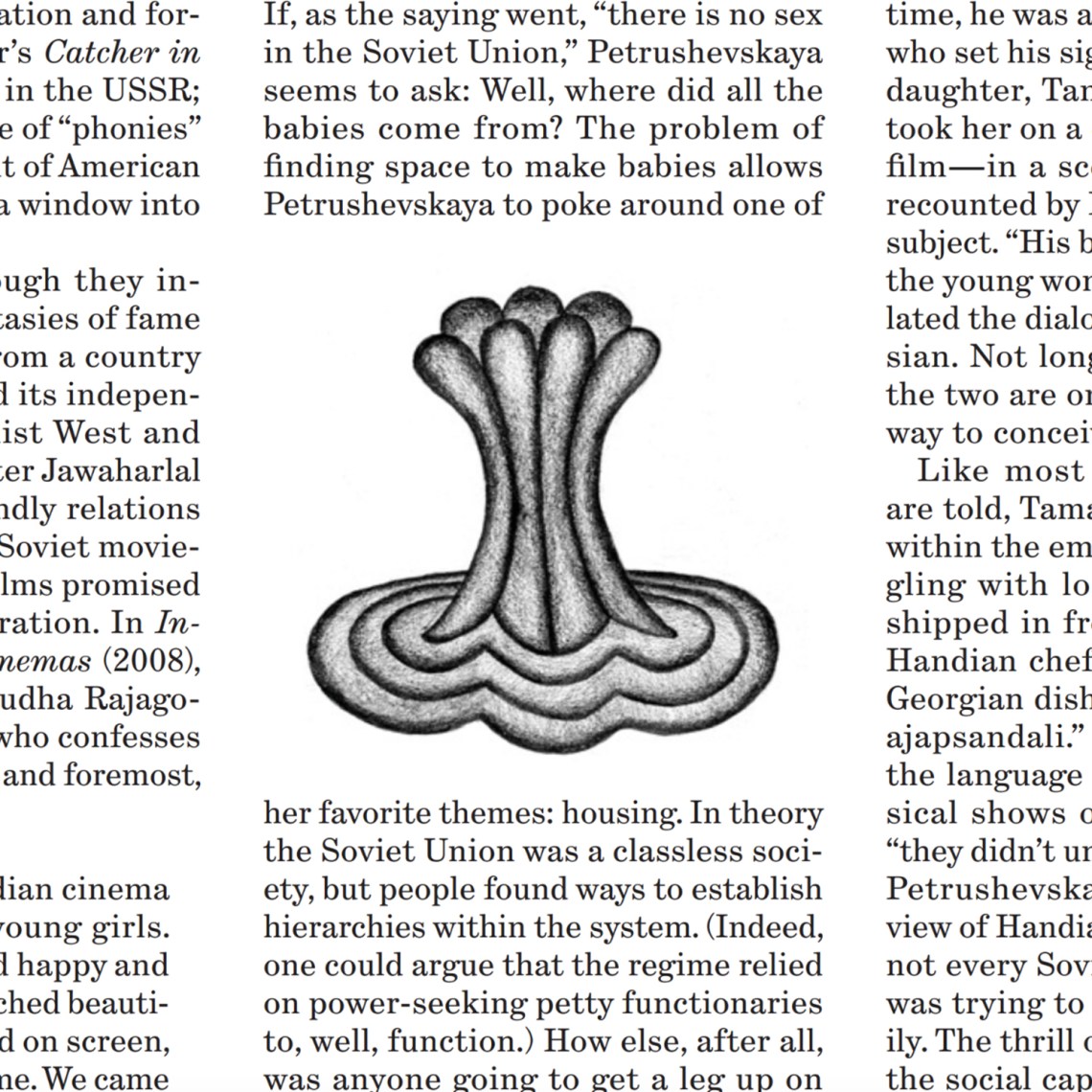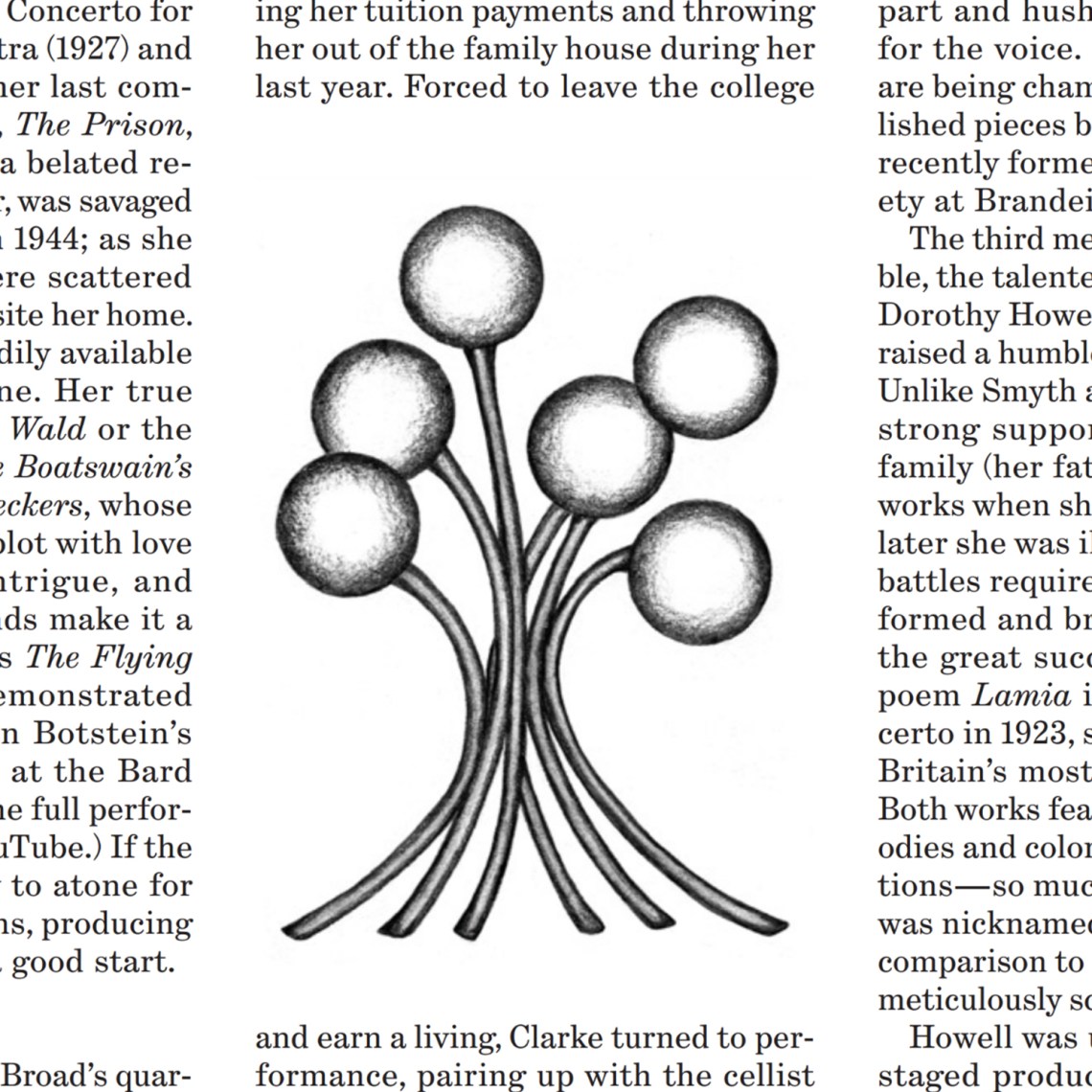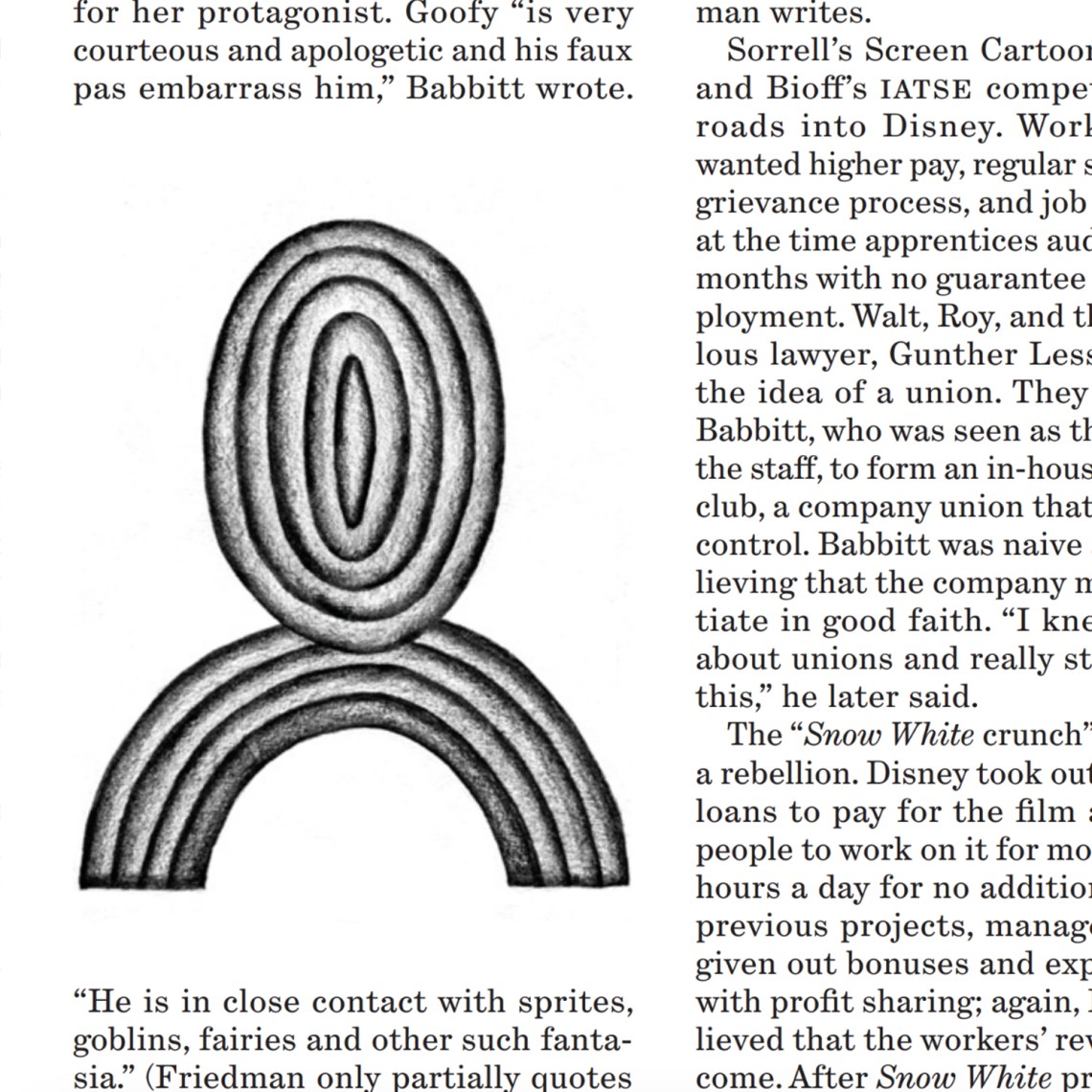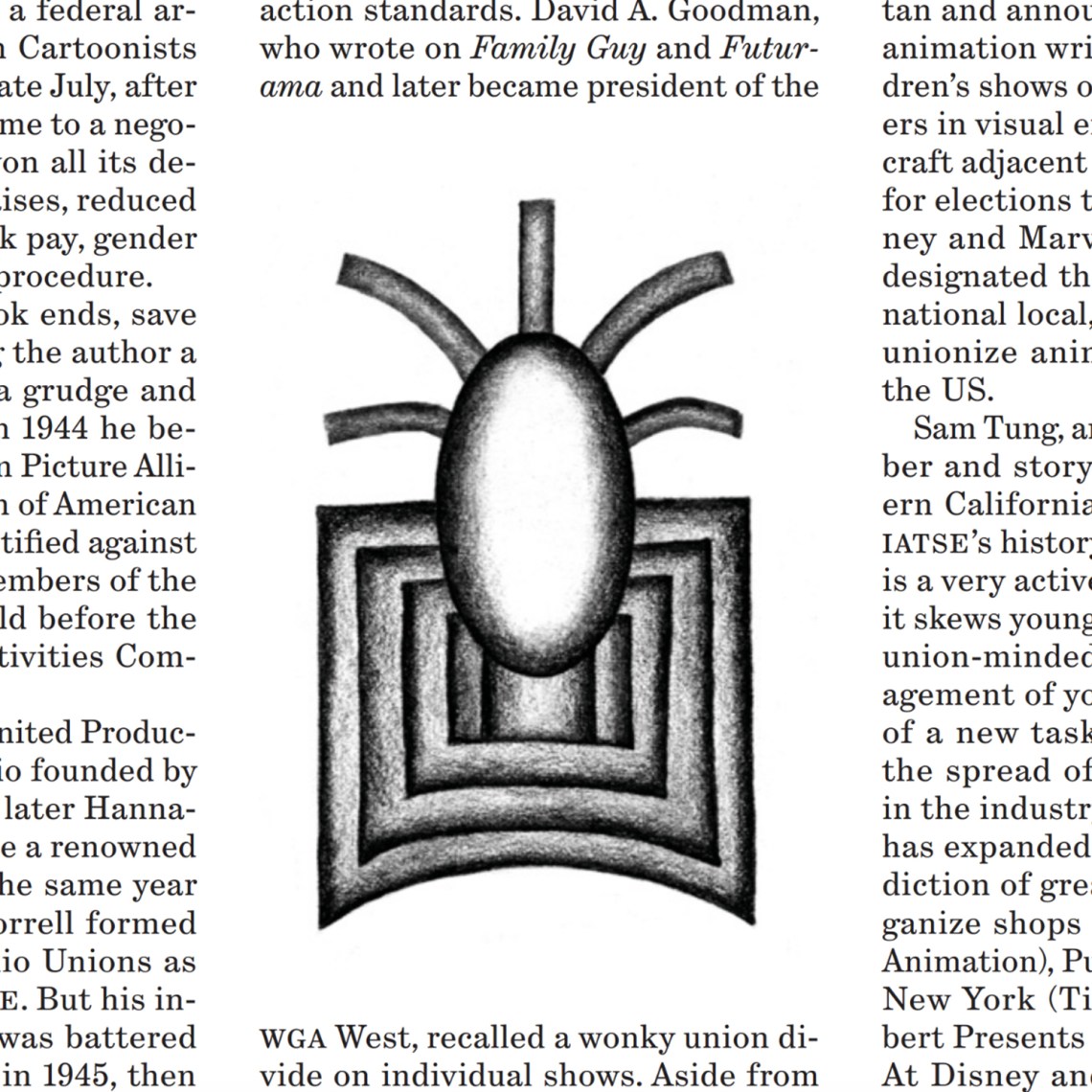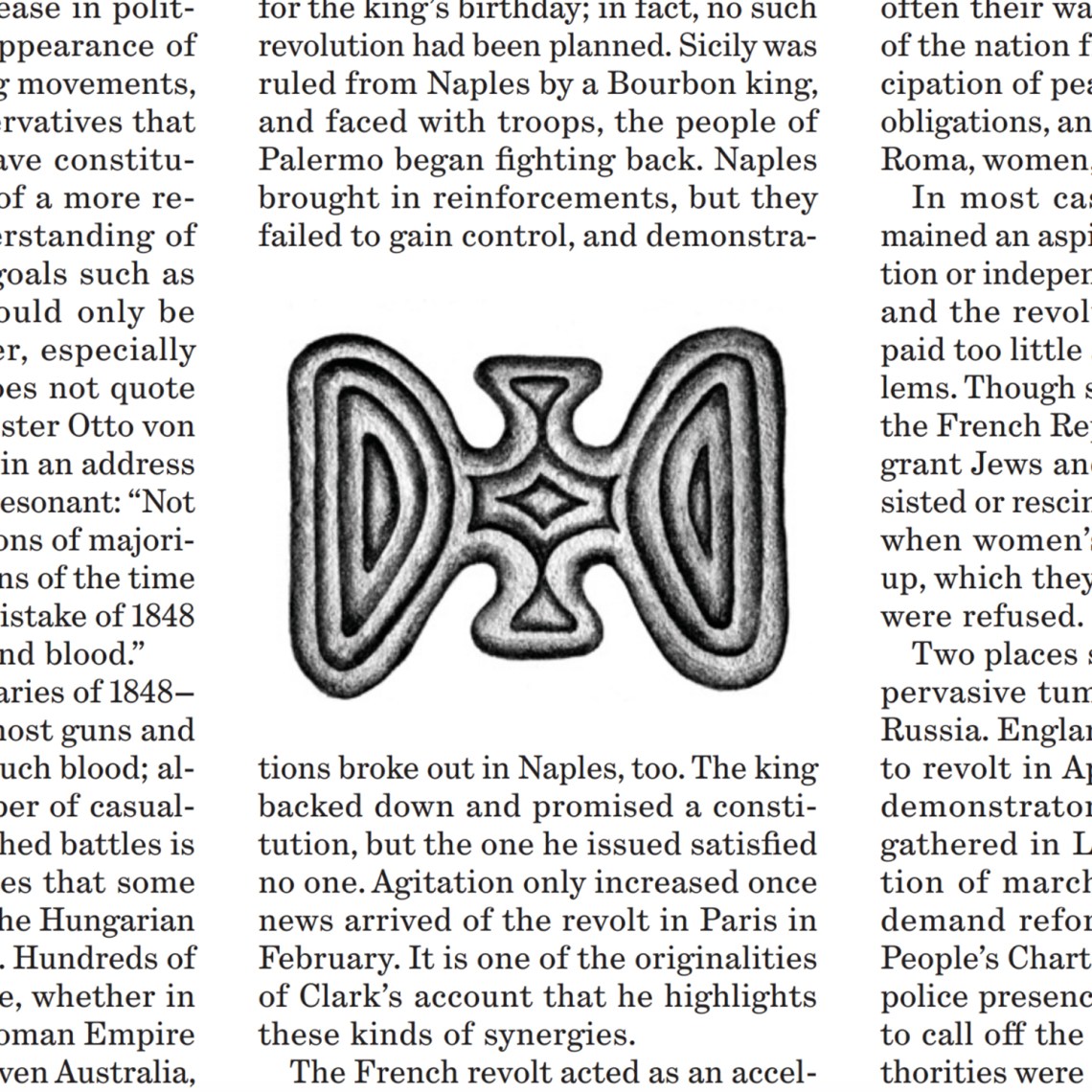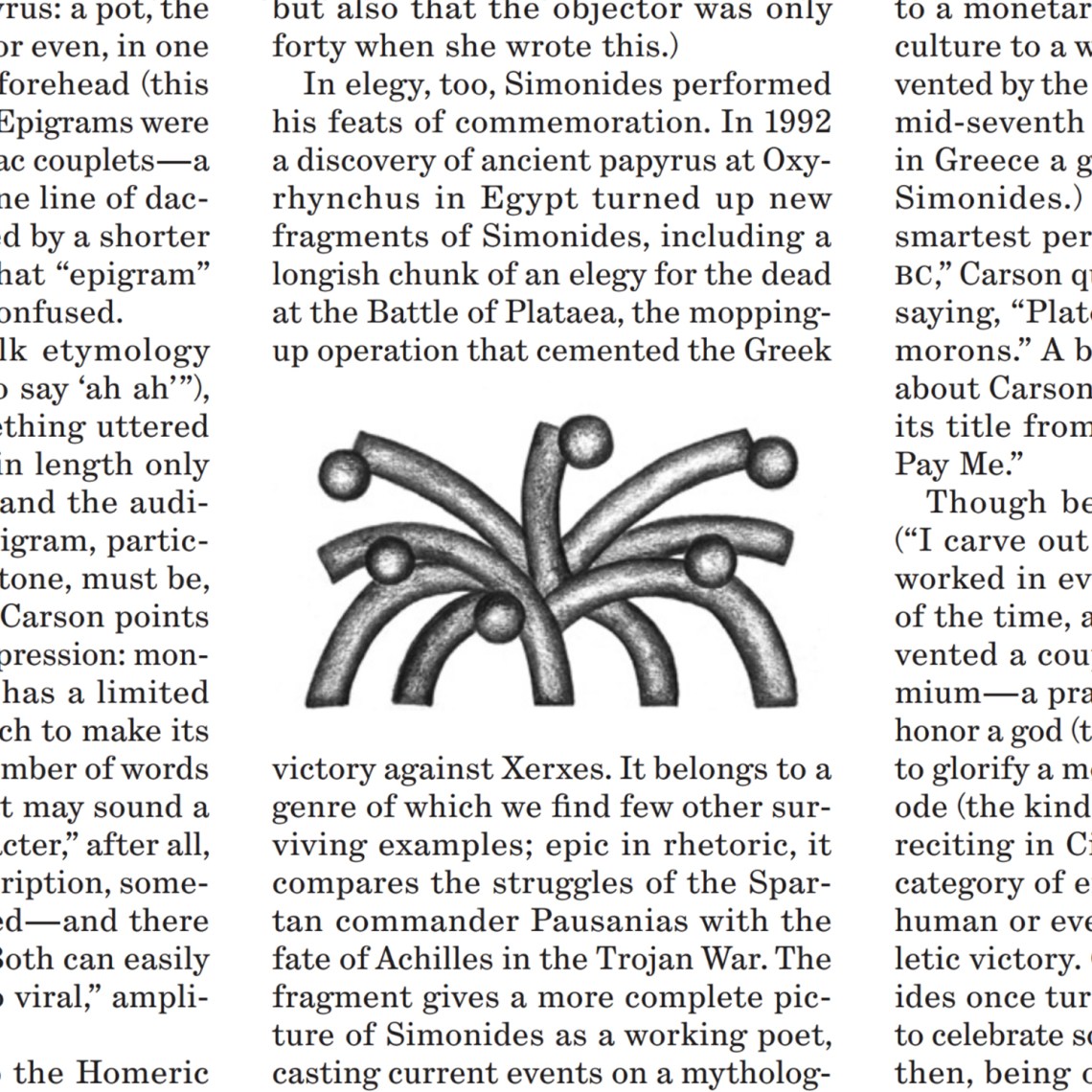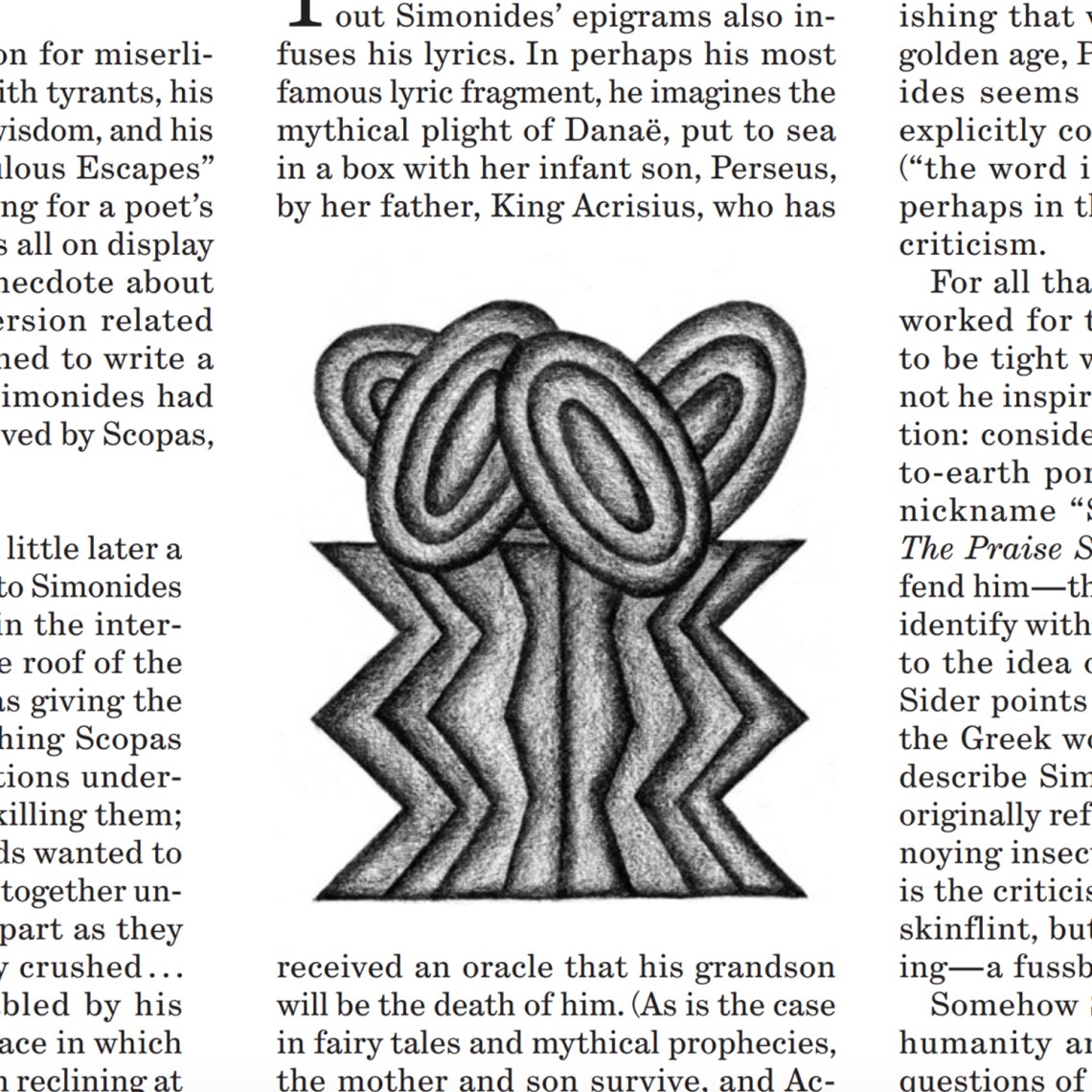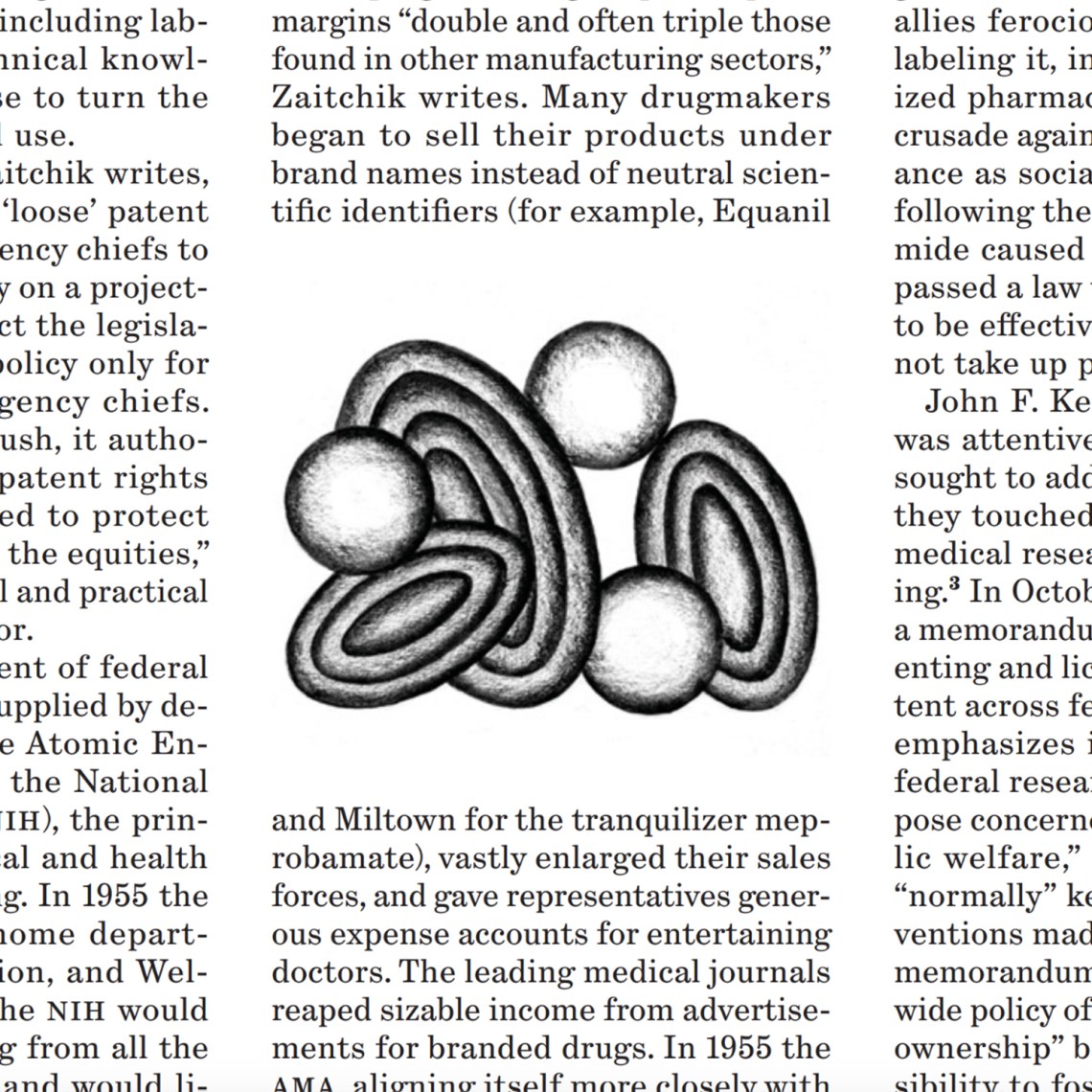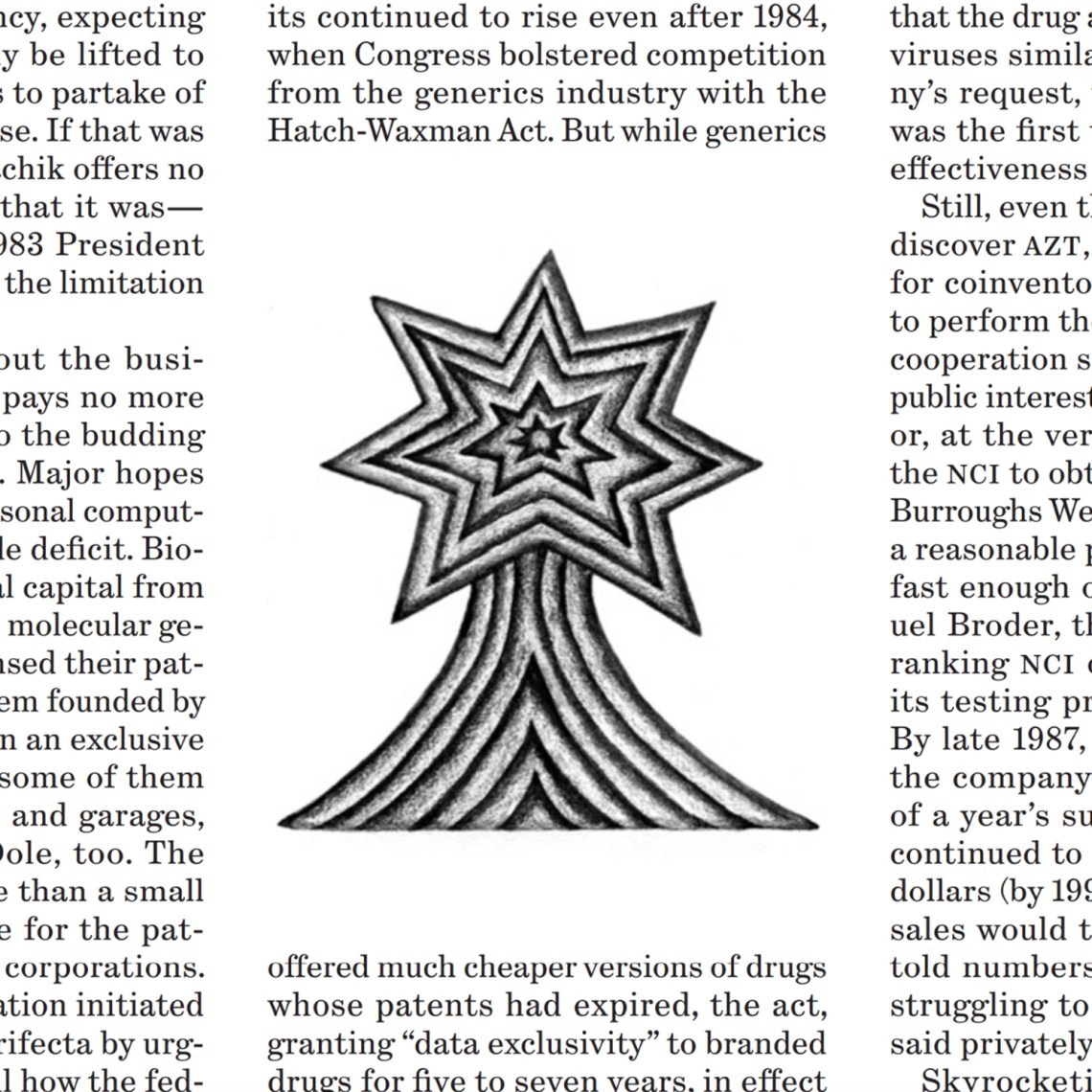We closed our annual Fall Books issue while I was in Canada during the final leg of my daughter’s school vacation. We hadn’t been to the Canadian National Exhibition, Canada’s annual swan song to summer—a festival of sugared donuts, Whack-A-Mole, and rickety carnival rides—since 2019, so as the air cooled one night, we took the streetcar to the fairgrounds on the shore of Lake Ontario. After sampling Dutch, Caribbean, Italian, Greek, and French-Canadian food we hit the Ferris wheel, the Polar Express, and the Haunted Mansion before a sloshy ride on the Tilt-A-Whirl sent us home for Dramamine and chamomile tea.
Alain Pilon’s cover for the issue marks the end of something sweet, too—its wilted flowers and rotten fruit a caution against staying too long. (I interviewed Pilon about it for our Brief Encounters newsletter.)
Inside, for Michael Gorra’s review of Zadie Smith’s new novel, The Fraud, Yann Kebbi drew Smith sans turban, elegant in a conversational posture. Smith may be one of the more recognizable living writers of our time, and Kebbi’s sketch gave us a new take, while also reminding me of David Hockney’s pencil-crayon portraits of his 1960s circle.
Vivienne Flesher’s Margo Jefferson beams from Colin Grant’s review of her memoir, Constructing A Nervous System. As usual, Flesher’s enthusiasm for her subjects can be felt in her energetic lines.
I was very happy for an excuse to finally publish work by the artist Jake Longstreth in the Review. While he usually paints Southern California, I wrote to him hoping that he might have some landscapes from farther north for Ben Tarnoff’s review of two new books about Palo Alto and Silicon Valley. Longstreth sent a selection of his gorgeous, brightly sterile scenes, and we chose a 2019 painting of a glass building and parking lot. Only after publication did we find out that Longstreth is the son-in-law of Linda Greenhouse, whose essay about police misconduct also appears in the issue.
For the second portrait she has made for us, the Brazilian illustrator Sol Cotti drew the writer Ramona Ausubel for Regina Marler’s review of Ausubel’s fifth book, The Last Animal. Cotti covered Ausubel’s sweater in mammoth tusks in a nod to the novel’s eponymous beast and its Arctic setting. We got more wildlife in Australian-born Anna Higgie’s illustration of Rachel Ingalls for Lily Meyer’s review of several recent reissues of Ingalls’s books. Higgie suggested that frogs might look nice perched in the “vaguely sexual” flora in the background of the portrait.
I commissioned the German-Hungarian and Canadian artist and illustrator Hanna Barczyk for the first time, asking her for a portrait of Domenico Starnone for Justin Davidson’s review ofThe House on Via Gemito. She wanted to evoke the haunting quality of memories and gave Starnone a shadow that is filled with handwriting.
The series art was done by Clare Crespo, an artist, sculptor, ceramicist, illustrator, designer, TV host, and author whose food-themed illustrated wall calendars I’ve been using for the past decade. Her life-sized giraffe sculpture can currently be seen in the window of the Irene Neuwirth store on Madison Avenue.
We closed our October 5 issue in mid-September, during weeks of rain and extreme heat in the city. With Bill McKibben’s essay about the effects of traffic infrastructure and the soggy atmosphere in mind, I looked at the work of the Canadian painter Nancy Friedland for our cover. Her highways, woods, lakes, and cars have an existential nostalgia, and the painting we ultimately chose, Still Half Perfect—which was part of a recent group show at the gallery La Loma Projects in LA—conjures up the chill of the coming fall.
For Jennifer Wilson’s review of Ludmilla Petrushevskaya’s latest novel, Kidnapped, the San Francisco–based artist Karen Barbour sent us five paintings to choose from. We picked a three-quarter portrait of the Russian writer, hatted and seated. Coincidentally, a show of Barbour’s paintings of visions and hallucinations opened at Jack Hanley Gallery in TriBeCa the week we closed the issue. I dropped by with my daughter and greeted Barbour: she was touching up an older piece, holding a tube of blue paint and a long brush, surrounded by her dreamy paintings.
The novelist, poet, musicologist, literary critic, art historian, and photographer Mário de Andrade got the Andrea Ventura treatment for Larry Rohter’s review of three of Andrade’s books. Ventura’s slightly fractured, layered, and framed illustration, depicting the Brazilian author in an olive-green suit, suits Rohter’s admiring portrait perfectly.
For McKibben’s review of two books about road ecology and parking, our summer art intern, Hannah Langer, tracked down Ed Ruscha’s Parking Lots through his LA gallery. Ruscha himself was in New York for the opening of a retrospective of his work at MoMA. Another painter, Seoul-based Juwon Jeong, contributed Morning Medicine (2021) to accompany Daniel Kevles’s review of Owning the Sun: A People’s History of Monopoly Medicine from Aspirin to Covid-19 Vaccines by Alexander Zaitchik.
Advertisement
John Broadley read A.E. Stallings’s essay about Simonides and e-mailed to say that while he was “dodgy for time…the subject matter looks like something I can turn my hand to easily.” I love an illustrator comfortable with ancient Greek poetry. The final image called to mind the colors and compositions of fifth-century pottery.
The series art in the issue, Calculations, is by Rachel Levit Ruiz, whose work appeared on our May 25 cover. Her series pieces all have a certain symmetry that I hope augurs, after a summer of political and economic disequilibrium that ended for me in a literal messy tilt-a-whirl, a more balanced autumn.


